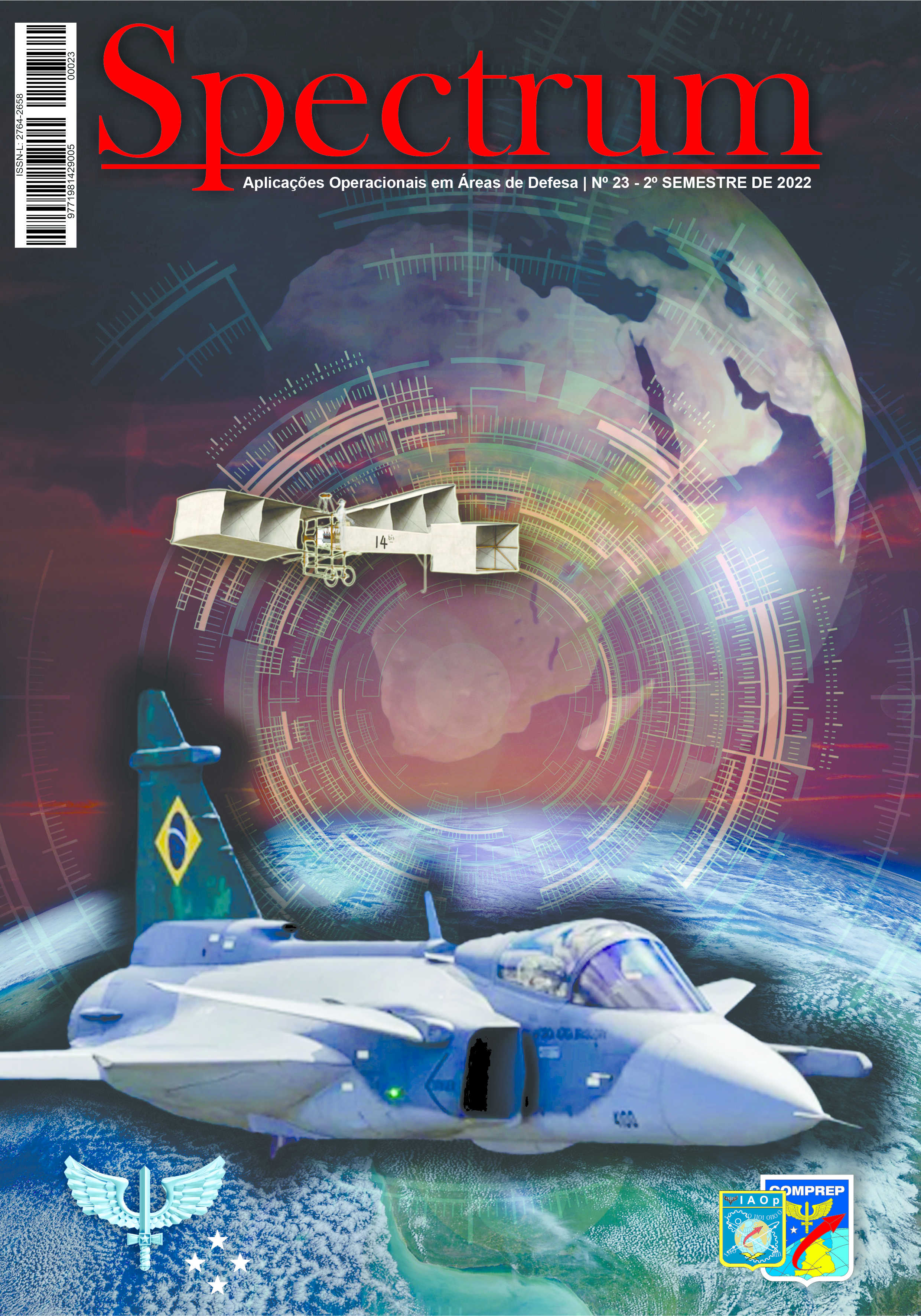Utilização da heurística Extremal Optimization para alocação coordenada de múltiplos alvos em Combate Aéreo BVR
DOI:
https://doi.org/10.55972/spectrum.v23i1.384Palavras-chave:
Otimização, Alocação de Alvos, HeurísticaResumo
Este trabalho investigou a heurística Extremal Optimization (EO) para a resolução do problema de Alocação Armamento-Alvo, do inglês Weapon-Target Assignment (WTA), quando aplicado a um contexto de Combate Aéreo Além do Alcance Visual, do inglês Beyond Visual Range (BVR). O WTA é um problema de otimização combinatória, classificado como NP-Completo. Devido a esta característica, sua complexidade cresce exponencialmente a medida que o número de variáveis aumenta. Assim, métodos heurísticos se mostram os mais adequados a esta classe de problemas, se comparado a tentativa de resolução por métodos exatos. O Experimento realizado neste trabalho demonstrou que o EO adaptado ao WTA em um cenário de combate BVR convergiu rapidamente para o mínimo global da função, mostrando-se bem adequado a resolução de problemas desta classe.
Referências
R. K. Ahuja, A. Kumar, K. C. Jha, and J. B. Orlin, “Exact and Heuristic Algorithms for the Weapon-Target Assignment Problem,” Oper. Res., vol. 55, no. 6, pp. 1136–1146, 2007.
A. S. Manne, “A Target-Assignment Problem,” Oper. Res., vol. 6, no. 3, pp. 346–351, Jun. 1958.
S. P. Lloyd and H. S. Witsenhausen, “Weapons Allocation is {NP}-Complete,” in Proceedings of the Summer Conference on Simulation, 1986, pp. 1054–1058.
P. M. Pardalos and L. S. Pitsoulis, Nonlinear assignment problems : algorithms and applications, no. 7. Springer US, 2000.
D. A. Grundel, “Probabilistic analysis and results of combinatorial problems with military applications,” University of Florida, 2004.
B. Liu, Z. Qin, R. Wang, Y. B. Gao, and L. P. Shao, “A hybrid heuristic particle swarm optimization for coordinated multi-target assignment,” 2009 4th IEEE Conf. Ind. Electron. Appl. ICIEA 2009, pp. 1929–1934, 2009.
W. Jingye, “Weapon-Target Assignment Research Based on Genetic Algorithm Mixed with Damage Simulation,” in International Conference on Computer Application and System Modeling, 2010, no. Iccasm, pp. 460–463.
J. Wang and Y. W. Zhu, “A solving algorithm for Target Assignment optimization model based on SA,” Proc. - Int. Conf. Artif. Intell. Comput. Intell. AICI 2010, vol. 3, no. Icnc, pp. 489–493, 2010.
M. A. Sahin and K. Leblebicioglu, “A hierarchical fuzzy decision maker for the Weapon Target Assignment,” IFAC Proc. Vol., vol. 18, no. PART 1, pp. 8993–8998, 2011.
S. Boettcher and A. G. Percus, “Extremal Optimization: Methods derived from Co-Evolution,” in Proceedings of the Genetic and Evolutionary Computation Conference, 1999, pp. 825–832.
S. Boettcher and A. G. Percus, “Extremal Optimization: An Evolutionary Local-Search Algorithm,” in Computational Modeling and Problem Solving in the Networked World, 2003, pp. 61–77.
P. Bak, C. Tang, and K. Wiesenfeld, “Self-organized criticality: an explanation of the 1/ f noise,” Phys. Rev. Lett., vol. 59, no. 4, pp. 381–384, 1987.
IEAV, “Projeto Aerograf.” [Online]. Available: http://www.ieav.cta.br/divisoes/site-egi/?page_id=36. [Accessed: 05-Jul-2017].
De-Lin Luo, Chun-Lin Shen, Biao Wang, and Wen-Hai Wu, “Air Combat Decision-Making for Cooperative Multiple Target Attack Using Heuristic Adaptive Genetic Algorithm,” in 2005 International Conference on Machine Learning and Cybernetics, 2005, pp. 473–478.
Downloads
Publicado
Como Citar
Edição
Seção
Categorias
Licença
Copyright (c) 2022 Leonardo Honorio Macedo, Rodrigo Arnaldo Scarpel, Henrique Costa Marques

Este trabalho está licenciado sob uma licença Creative Commons Attribution-NonCommercial-ShareAlike 4.0 International License.



